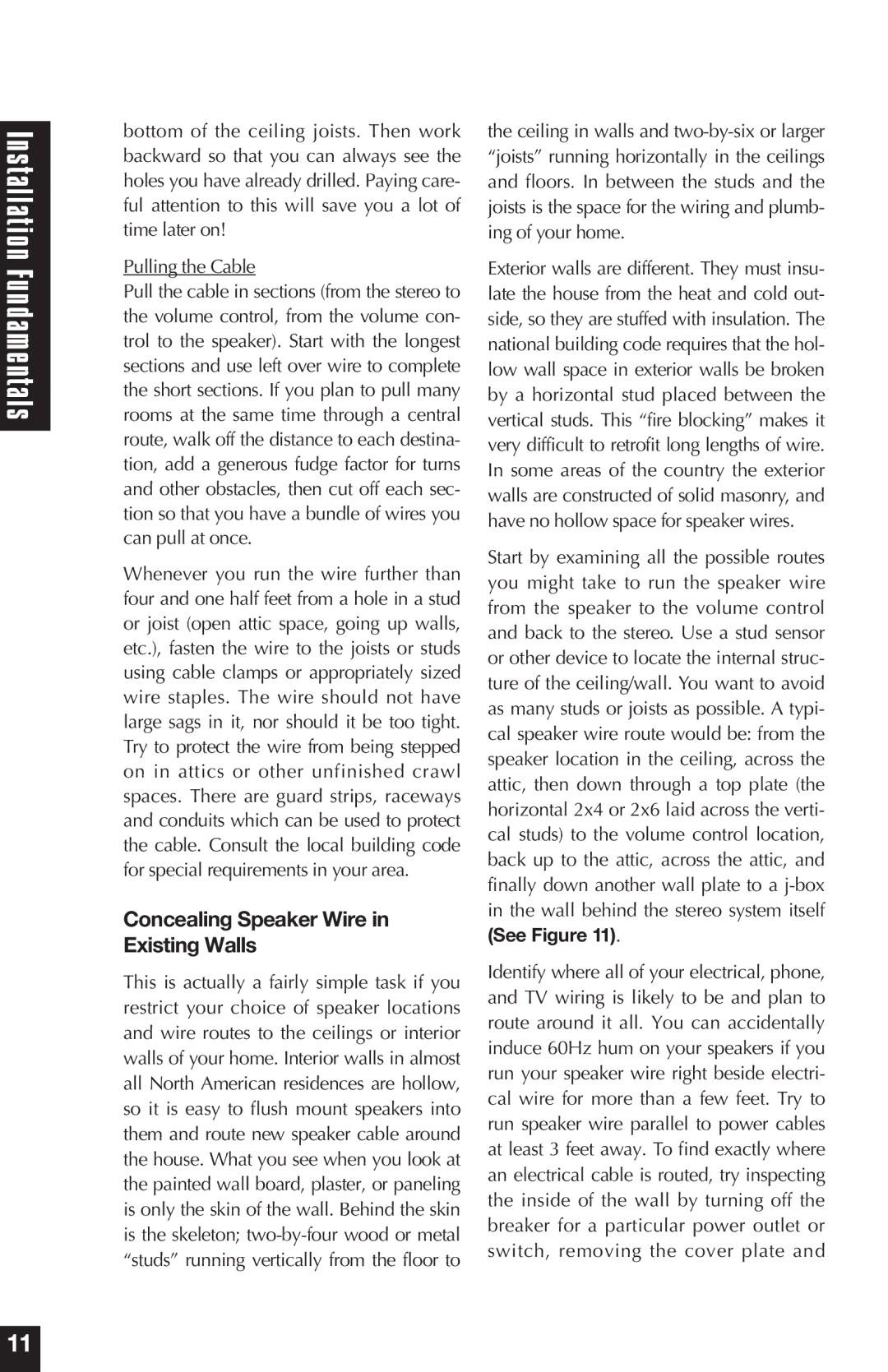Installation Fundamentals
bottom of the ceiling joists. Then work backward so that you can always see the holes you have already drilled. Paying care- ful attention to this will save you a lot of time later on!
Pulling the Cable
Pull the cable in sections (from the stereo to the volume control, from the volume con- trol to the speaker). Start with the longest sections and use left over wire to complete the short sections. If you plan to pull many rooms at the same time through a central route, walk off the distance to each destina- tion, add a generous fudge factor for turns and other obstacles, then cut off each sec- tion so that you have a bundle of wires you can pull at once.
Whenever you run the wire further than four and one half feet from a hole in a stud or joist (open attic space, going up walls, etc.), fasten the wire to the joists or studs using cable clamps or appropriately sized wire staples. The wire should not have large sags in it, nor should it be too tight. Try to protect the wire from being stepped on in attics or other unfinished crawl spaces. There are guard strips, raceways and conduits which can be used to protect the cable. Consult the local building code for special requirements in your area.
Concealing Speaker Wire in Existing Walls
This is actually a fairly simple task if you restrict your choice of speaker locations and wire routes to the ceilings or interior walls of your home. Interior walls in almost all North American residences are hollow, so it is easy to flush mount speakers into them and route new speaker cable around the house. What you see when you look at the painted wall board, plaster, or paneling is only the skin of the wall. Behind the skin is the skeleton;
the ceiling in walls and
Exterior walls are different. They must insu- late the house from the heat and cold out- side, so they are stuffed with insulation. The national building code requires that the hol- low wall space in exterior walls be broken by a horizontal stud placed between the vertical studs. This “fire blocking” makes it very difficult to retrofit long lengths of wire. In some areas of the country the exterior walls are constructed of solid masonry, and have no hollow space for speaker wires.
Start by examining all the possible routes you might take to run the speaker wire from the speaker to the volume control and back to the stereo. Use a stud sensor or other device to locate the internal struc- ture of the ceiling/wall. You want to avoid as many studs or joists as possible. A typi- cal speaker wire route would be: from the speaker location in the ceiling, across the attic, then down through a top plate (the horizontal 2x4 or 2x6 laid across the verti- cal studs) to the volume control location, back up to the attic, across the attic, and finally down another wall plate to a
Identify where all of your electrical, phone, and TV wiring is likely to be and plan to route around it all. You can accidentally induce 60Hz hum on your speakers if you run your speaker wire right beside electri- cal wire for more than a few feet. Try to run speaker wire parallel to power cables at least 3 feet away. To find exactly where an electrical cable is routed, try inspecting the inside of the wall by turning off the breaker for a particular power outlet or switch, removing the cover plate and
11
